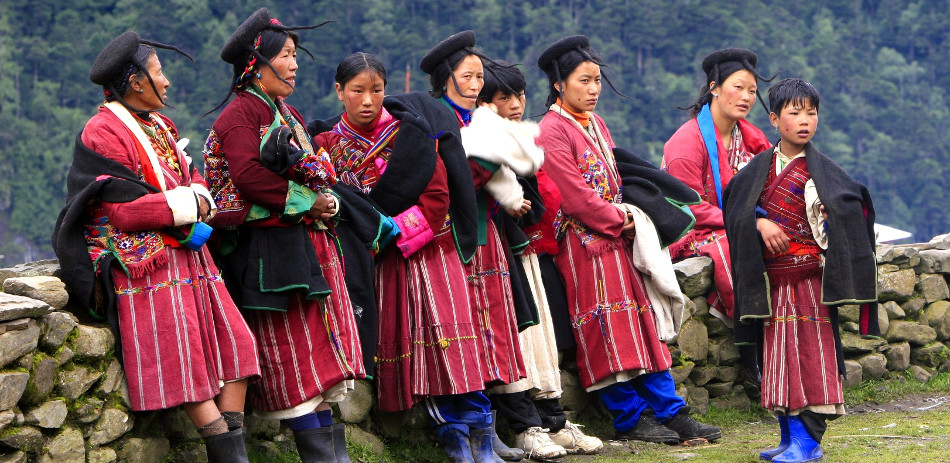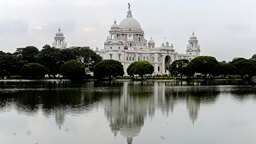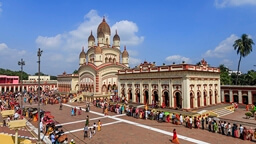Day 01 Arrive Kolkata
Arrive Kolkata international airport.
Meet & Assist: you will be met our airport representative in the arrival area of the airport after you clear all immigration and customs formalities. Special welcome waits for you at the airport with nice garlands. You will be transferred to your hotel.
Kolkata, the capital of the East Indian state of West Bengal is seen as the land of the intellectuals. It is also famous as the Land of Mother Teresa and Rabindra Nath Tagore. Communist in ideology and very politically aware, Kolkata was the capital of British India before Delhi assumed this position.
Kolkata developed from a fishermen’s’ village to become one of the largest cities in the world. The city symbolises creativity and vibrance with all the modern amenities available. Kolkata has adapted to the modern trends and techniques of the world but has not shed the leisurely life style and the calm of its hey days.
A city with strong cultural, literary and religious flavours, Kolkata acts as the gateway to the North-East
Overnight at Hotel
Day 02 Kolkata -Bagdogra-Darjeeling
Morning our car will report at hotel by 0830 Hrs to pick you up & transfer to airport to connect flight for Bagdogra leaving at 1035 Hrs & arriving Bagdogra at 1145 Hrs.
You will be met by our representative on arrival at airport & drive to Darjeeling.
Darjeeling is situated at an altitude of 7000ft and is a tourist paradise. One can spend a few days here marvelling at the tea gardens with the backdrop of the Khanchendzonga range or the many lovely sites in and around this town with a lot of character.
On arrival check in at hotel
Overnight at Hotel
Day 03 In Darjeeling
Tour starts early morning at 3.30am, gives one a once in a life time opportunity to view one of nature’s most thrilling sights-the sunrise view over the Himalayan panorama. Later you will visit the Ghoom Yiga Choling monastery and & enjoy the toy train ride.
Afternoon city tour of Darjeeling.
You will visit the Himalayan Mountaineering Institute – one of the premier schools of mountaineering in the world with a museum; the Padmaja Naidu Himalayan Zoological Park (famous for its snow leopard breeding programme), the Natural History Museum, Darjeeling Peace Pagoda, Dhirdham temple and the Darjeeling-Rangit valley passenger ropeway.
Overnight at Hotel
Day 04 Darjeeling – Pemayangtse
Morning drive to Pemayangtse.
The Pemayangtse Monastery plunges down into the hot, humid valley of the Teesta river where broad-leafed tropical plants thrive and then rises to a 2,085 m high ridge. Here in the 17th century, a Buddhist sage set up a hermitage which grew into Pemayangtse Monastery. Excellent murals brighten this ancient shrine’s walls and ceiling and there is a wooden model of a heavenly palace as revealed in a dream to the founder of this monastery, Lhatsun Chempo.
On arrival transfer to Hotel.
Ovenright at Hotel.
Day 05 Pemayangtse -Gangtok
Post breakfast drive to Gangtok.
Gangtok is the capital city Sikkim, the second smallest state of India. Famous for its many important monasteries, and for the picturesque views of the Himalayas, Gangtok is one of the important hill-station of the country. In Gangtok you can see a smooth blend of both tradition and modernity. Located at an altitude of 1547 m above sea level, Gangtok houses some of the important Buddhist religious sites too. The existence of the peaceful Chortens or Stupas, old monasteries and the un-spoilt natural beauty of Gangtok offers you a truly unique traveling experience
On arrival check in at Hotel.
Afternoon visit to Encey monastery & local handicraft center.
The list of attractions in Gangtok is endless. The small town itself is a beautiful place to move around. It houses sites like the most important ‘stupa’ of Sikkim, the Do Drul Chorten, the solitary temple or the Enchey Monastery, the marvellous collection of orchids in the Orchid Sanctuary and the picturesque Tashi Ling that provides an astounding view of the Kanchenjunga range. The Namgyal Institute of Research and the Tsuk la Khang, a depository of a large collection of scriptures and the principal place of worship for the local Buddhists, are some of the other places that are worth visiting.
Gangtok has a number of interesting sites that you can include in your excursion. Some of the destinations are related to the Buddhist religion while others are simply picturesque, deserving an admiring look. the Rumtek Monastery, which is the largest monastery of its kind in Sikkim
Overnight at Hotel
Day 06 Gangtok–Phuentsholing
Morning drive to Phuentsholing
The small modern town of phuentsholing in the south is the gateway to Bhutan. Headquarters of the Bank of Bhutan and the Royal Insurance Corporation of Bhutan on top of a law hill at nearby Kharbandi a small Gumpha.Or public temple , reconstructed by Queen Phuentsholing Chhoden, grandmother of the present king looks out over the town and the surrounding plains.
The Amo Chuu, commonly known as the Torsha River, is a favourite spot for fisherman and picnickers. The jungles that lie close by teem with wild animals and birds, for here the traveler is in the heart of Bhutan’s subtropical southern zone.
From Phuentsholing the road winds north, over the southern foothills, through lush forested valleys and around the rigged north-south ridges of the inner of Thimpu and Paro. Hairpin corners on this breathtaking six hour drive are, to reassure the traveler, marked with tall, colourful sculptures of the Tashi Tagye, the eight auspicious signs of Buddhism
Balance day at leisure
Overnight at hotel
Day 07 Phuentsholing-Thimpu
Morning drive to Thimpu,
The capital of Bhutan is situated on west bank of the river Thimphu, (Thimphu Chhu) in a wooded valley at an elevation of 2320m. Prior to 1961 Thimpu was only an insignificant village, but since the country emerged from isolation its importance has grown and it has many official buildings. The Secretariat, King’s offices and some ministries are housed in the Tashichho Dzong, next to which one of the world’s highest golf courses (9 hole) has been made. With a population of mo more than 60,000, Thimphu is an easy place to wander around, and will enable the visitor to appreciate the detail of Bhutanese architecture. A few miles south of the capital is Simtokha, one of the oldest complete Dzongs in the country, dating from the early 1600’s, a period when Shabdrungs, the line of religious rulers originally from Tibet, ruled the country.
Balance day at leisure
Overnight at hotel
Day 08 In Thimpu
Morning after breakfast proceed for a guided tour of Thimphu.
Start with a visit of National Library, which holds a vast collection of ancient Buddhist texts and manuscripts, some dating back several hundred years, as well as modern academic books mainly on Himalayan culture and religion.
Also visit nearby Institute for Zorig Chusum: Commonly known as Arts & Crafts School or Painting School, the Institute offers a six-year course on the 13 traditional arts and crafts of Bhutan. On a visit, one can see students learning the various skills taught at the school.
Drive towards city centre to visit Textile and Folk Heritage Museum: These museums, both of which opened in 2001, provide fascinating insights into Bhutanese material culture and way of life.
Conclude sightseeing with a visit of Trashichhodzong: This impressive fortress/monastery houses Secretariat building, the throne room of His Majesty, the King and various government offices. It is also the summer residence of Chief Abbot and central monk body.
Late afternoon or early evening before dinner time visit Handicrafts Emporium: This government-run enterprise displays a wide range of beautifully hand-woven textiles and craft products. It also carries a small collection of books on Bhutan, Buddhism and Himalayan culture.(Library, textile muesuem, zorig chusum – closed on Sat & sun)
Overnight at Hotel.
Day 09 Thimpu-Dochula-Trongsa
After early breakfast, drive to Dochula pass (alt. 3100 m). If weather permits, one can see a range of high Himalayan peaks towards the north east – Masagang (7158 m), Tsendagang (6960 m), Terigang (7060 m), Jejegangphugang ( 7158 m), Kangphygang (7170 m), Zongaphygang (7060 m) and finally Gangkar Punsum, the highest peak in Bhutan at 7497 m. After the visit to Dochula pass drive on to Tongsa.
On arrival check in at hotel
Overnight at hotel
Day 10 Trongsa-Bhumthang
After breakfast walk by Tongsa Dzong, built by Shabdrung in 1647 and visit the Ta Dzong (Watch tower), dedicated to Buddhist epic hero, King Gesar of Ling.
Later drive on to Bumthang.
On arrival Check in at hotel
Afternoon visit to Kurje Lhakhang (where the Saint Padsambhaca subdued a local demon and left his body imprint on a rock), the Jambey Lhakhang, Tamshing Monastery and Swiss Farm house.
Evening at leisure.
Overnight at hotel
Day 11 Bhumthang-Dzong-Punakha
After breakfast explore fascinating valley of Bumthang. Before arriving Punakha visit Wangdiphodrang Dzong town enroute.
On arrival check in at the hotel
Overnight at hotel.
Day 12 Punakha-Paro
Morning take a short nature walk in the vicinity of hotel and drive to Paro via Dochu La, following way back up the dramatic Wang Chhu and Paro Chhu river valleys, before crossing through Paro Town towards the north end of the valley.
Afternoon visit Drukgyel Dzong: This Dzong, with a delightful village nestling at its foot, was built in 1646 by Shabdrung Ngawang Namgyal to commemorate his victory over the Tibetan invaders. Historically and strategically this Dzong withstood all its glory and was featured in 1914 vide National Geographic magazine. The glory of Drukgyel Dzong remained even when it was destroyed by fire in 1951. On a clear day, one can see the commanding view of Mount. Chomolhari from the village, below the Dzong.
Also visit nearby Kyichu Lakhang: It is one of the oldest and most sacred shrines of the Kingdom dating back to 7th century (the other is Jambey Lhakahng in Bumthang). The lhakhang complex is composed of two temples. The first temple was built by Tibetan King, Songtsen Gampo in the 7th century and in 1968, H.M. Ashi Kesang, the Queen Mother of Bhutan, built the second temple in same original pattern.
On arrival check in at hotel
Overnight at hotel
Day 13 In Paro
After breakfast, drive up the valley to view the ruins of Drukgyel Dzong. It was from here that the Bhutanese repelled several invading Tibetan armies during the 17th century. Also visit Kyichu Lhakhang, one of the oldest and most sacred shrines of the Kingdom.
Then excursion to Taktsang Monastery (approx 5 hrs walk). It is one of the most famous of Bhutan’s monasteries, perched on the side of a cliff 900m above the Paro valley floor. It is said that Guru Rinpoche arrived here on the back of a tigress and meditated at this monastery and hence it is called ‘Tiger’s Nest’. This site has been recognised as a most sacred place and visited by Shabdrung Ngawang Namgyal in 1646 and now visited by all Bhutanese at least once in their lifetime.
Later in the afternoon visit Ta Dzong (Sun Mon & govt holidays closed) once a watchtower, built to defend Rinpung Dzong during inter-valley wars of the 17th century, Ta Dzong was inaugurated as Bhutan’s National Museum in 1968. It holds fascinating collection of art, relics, religious thangkha paintings and Bhutan’s exquisite postage stamps. The museum circular shape augments its varied collection displayed over several floors afterwards, walk down a hillside trail to visit Rinpung Dzong, which has a long and fascinating history. Built in 1646 by Shabdrung Ngawang Namgyal , the first spiritual and temporal ruler of Bhutan, the Dzong houses the monastic body of Paro, the office of the Dzongda (district administrative head) and Thrimpon (judge) of Paro district. The approach to the Dzong is through a traditional covered bridge called Nemi Zam. A walk through the bridge, over a stone inlaid path, offers a good view of the architectural wonder of the Dzong as well as life around it. It is also the venue of Paro Tshechu, held once a year in the spring
Overnight at hotel
Day 14 Paro – Delhi & fly out
Morning in time transfer to airport to connect flight for Delhi. Upon arrival connect your international flight to home.










Reviews
There are no reviews yet.